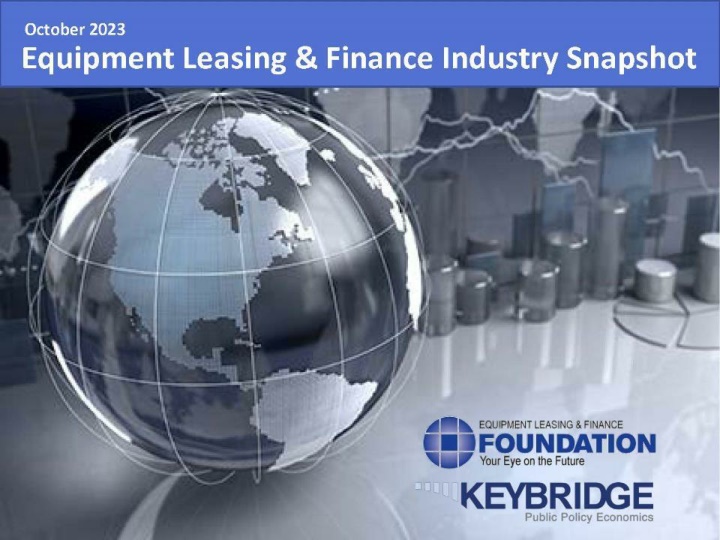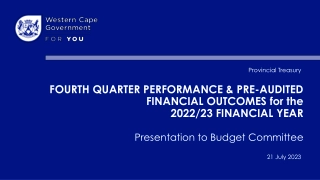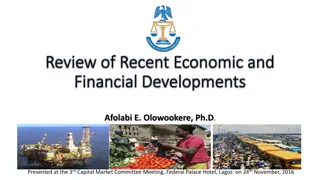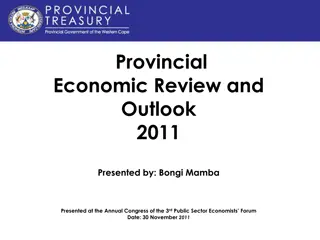Economic Trends and Insights
Dive into the latest economic data and analysis covering key sectors like overall economy, investment, and business health. Understand the factors driving growth and the challenges posed by headwinds. Explore top economic tailwinds and headwinds shaping the current economic landscape, from job market dynamics to global economic slowdown concerns.
Download Presentation

Please find below an Image/Link to download the presentation.
The content on the website is provided AS IS for your information and personal use only. It may not be sold, licensed, or shared on other websites without obtaining consent from the author.If you encounter any issues during the download, it is possible that the publisher has removed the file from their server.
You are allowed to download the files provided on this website for personal or commercial use, subject to the condition that they are used lawfully. All files are the property of their respective owners.
The content on the website is provided AS IS for your information and personal use only. It may not be sold, licensed, or shared on other websites without obtaining consent from the author.
E N D
Presentation Transcript
Data: Table of Contents 1. Overall Economy p. 3 2. Investment p. 8 3. Business Health p. 11 1
Data: Table of Contents 1. Overall Economy p. 3 2. Investment p. 8 3. Business Health p. 11 2
Economy The economy expanded by 2.1% (SAAR) in Q2 2023, the fourth consecutive quarter of healthy growth. Real GDP Growth Annualized % Change from Prior Quarter 10% Forecast 30-Year Quarterly Average = 2.6% 7.0% 34.8% +2.1% 6.2% 5% 4.2% 5.2% 4.6% 4.2% 3.4% 3.3% 2.6% 2.7% 2.2% 2.6% 2.2% 0.7% 0.4% 0% -0.6% -2.0% -5.3% -28.0% -5% -10% 2018.Q4 2019.Q4 2020.Q4 2021.Q4 2022.Q4 2023.Q4 3 Source: U.S. Bureau of Economic Analysis, Keybridge LLC
Economy The Q2 expansion was broad-based, fueled primarily by consumer spending, government spending, and business investment. Tailwinds & Headwinds Contributions to GDP growth by sector TAILWINDS HEADWINDS [-0.09] [+2.14] Net Exports (+0.04) Residential Investment (-0.09) Consumer Spending +0.55 Business Investment +0.57 GDP CHANGE [+2.05] Government Spending +0.98 4 Source: U.S. Bureau of Economic Analysis, Keybridge LLC
Top Economic Tailwinds ECONOMIC TAILWINDS The labor market remains a pillar of strength in the U.S. economy, with employers adding more than 2.3 million jobs this year as of September. Leisure & Hospitality and Government, which still trail their pre-pandemic levels, have been responsible for more than 40% of job growth this year. Average hourly earnings have slowed modestly this year but remain above 4%, a boon to workers but a challenge for the Fed. Job Growth Consumer spending remains a crucial driver of economic growth. Retail sales growth was higher than expected over the summer with strong spending at e-tailers, sporting goods stores, and restaurants and bars. These industries tend to be the first areas where consumers pull back during leaner periods. Thus far, no such pullback is evident. Despite rising debt levels, consumers kept the U.S. economic engine turning during Q2 and Q3 2023. Consumer Spending 5 Source: 2023 Q2 Equipment Leasing & Finance U.S. Economic Outlook
Top Economic Headwinds ECONOMIC HEADWINDS Growing concerns persist that consumer financial health may begin to deteriorate. In Q2, credit card debt eclipsed $1 trillion, and outstanding auto loans increased again. The resumption of student loan payments will add to financial obligations for nearly 27 million loan holders currently in forbearance. As much as $80 billion / year (or 0.3% of GDP) could be reallocated from consumer spending or savings to student loan repayment. Consumer Debt Eurozone countries face headwinds as global inflation continues to run hot. Germany experienced negative or zero economic growth for three consecutive quarters. Meanwhile, prices in China are falling, raising concerns of a deflationarytrap and the potential for a lost decade of growth. For the U.S. economy, flagging global demand could reduce exports and lower business investment. Global Economic Slowdown 6 Source: 2023 Q2 Equipment Leasing & Finance U.S. Economic Outlook
Top Economic Headwinds FACTORS TO WATCH Easing goods and energy prices brought headline inflation down to 3.1% Y/Y this summer, but, partially due to fluctuating oil prices, inflation was back up to 3.7% as of September. Core inflation is still well above the Fed s target. Price pressure in the service sector may be more firmly entrenched in the economy than the headline measure suggests. Inflation Oil prices have been volatile in recent weeks, nearing $100/barrel in late September before falling back near $80-85 a few weeks later. Volatile oil prices are posing a challenge as the Fed tries to control inflation. Easing oil prices will put downward pressure on headline inflation, but recent conflict in the Middle East could disrupt production if it leads to regional destabilization, driving prices up again. Oil Price Fluctuation In August, the United Auto Workers strike was one of nine strikes involving more than 1,000 workers. Though major strike concessions across the economy would be a positive development for unionized workers, it may put upward pressure on wages and lead to increased willingness by the Fed to keep rates higher for longer or, potentially, raise them further. Strike Activity 7 Source: 2023 Q2 Equipment Leasing & Finance U.S. Economic Outlook
Projections for Key Economic Indicators 2023 Quarterly Estimates Indicator 2021 2022 2023e Q1 Q2 Q3e Q4e 5.8% 2.2% 2.1% 4.2% 0.4% 2.3% 1.9% Real GDP(SAAR %) Real Investment in Equipment & Software(SAAR %) 8.8% -0.2% 7.0% 1.2% 0.5% 3.0% 7.9% 4.7% 5.8% 4.0% 3.5% 3.7% 4.2% 8.0% Inflation (year-on-year %) Federal Funds Target Rate (upper bound, end of period) 0.25% 5.00% 5.25% 5.50% 5.50% 5.50% 4.50% 7,267 937 603 799 310 2,649 4,793 Total Payroll Growth (thousands) Source: 2023 Q2 Equipment Leasing & Finance U.S. Economic Outlook 8
Investment Business investment expanded at a 7.4% annualized pace in Q2, driven by growth in nonresidential structures investment. Business Investment Real Nonresidential Fixed Investment, % Change from Prior Quarter 20% 7.4% 10% 0% -29.4% -10% -20% Q2.2013 Q2.2014 Q2.2015 Q2.2016 Q2.2017 Q2.2018 Q2.2019 Q2.2020 Q2.2021 Q2.2022 Q2.2023 Source: U.S. Bureau of Economic Analysis 9
Investment Most equipment verticals are below their historical average, suggesting that the climate for investment growth is likely to remain weak in the near term. Equipment & Software Investment Momentum Monitor Equipment Vertical Performance Matrix Source: 2023 Q2 Equipment Leasing & Finance U.S. Economic Outlook For more information on how to use the Momentum Monitors, see final slide. 10
Investment E&S investment growth is forecasted to ease in 2023 as the Fed s rate hikes dampen economic growth and cool businesses investment. Real Equipment & Software Investment Growth Q/Q % change, SAAR 20% 18.8% Forecast 15.4% 40.1% 11.9% 7.0% 7.0% 10% 9.0% 8.0% 6.7% 6.4% 5.7% 4.2% 1.3% 1.2% 0.7% 0.5% 0% -0.2% -14.0% -28.3% -1.2% -2.8% -3.0% -10% 2018.Q4 2019.Q2 2019.Q4 2020.Q2 2020.Q4 2021.Q2 2021.Q4 2022.Q2 2022.Q4 2023.Q2 2023.Q4 Source: U.S. Bureau of Economic Analysis; Projections from Keybridge 11
Bus. Health New business volume was up 2.8% year-to-date in August, a deceleration from last August when year-to-date growth was 5.0%. MLFI-25 New Business Volume (NBV) Billions of $ $140 $120 $121.4 $118.1 $111.1 $108.5 $100 $103.6 $102.1 $99.5 $97.4 $96.7 $95.1 $89.0 $80 $84.6 $74.0 $60 $60.6 $40 $20 $0 2010 2011 2012 2013 2014 2015 2016 2017 2018 2019 2020 2021 2022 2023 Source: ELFA MLFI-25 *Note: The MLFI-25 reports economic activity from 25 companies representing a cross section of the equipment finance sector. It does not represent the total size of the equipment finance industry. 12
Bus. Health On a nominal basis, year-over-year growth in new business volume was negative in July, but jumped to 14.8% Y/Y in August. MLFI-25 New Business Volume (NBV) Y/Y % change 30% 14.8% 20% 10% 0% -10% New business volume is up 2.8% year-to-date -20% -30% Aug 19 Aug 20 Aug 21 Aug 22 Aug 23 Source: ELFA MLFI-25 *Note: The MLFI-25 reports economic activity from 25 companies representing a cross section of the equipment finance sector. It does not represent the total size of the equipment finance industry. 13
Bus. Health After improving over the summer, equipment finance industry confidence fell 10 points in October and is now near a post-pandemic low. Monthly Confidence Index: Equipment Finance Industry (MCI-EFI) 80 70 60 50 40 40.1 30 20 Sep 14 Sep 15 Sep 16 Sep 17 Sep 18 Sep 19 Sep 20 Sep 21 Sep 22 Sep 23 Source: ELFF MCI-EFI 14
EQUIPMENT LEASING & FINANCE FOUNDATION The latest edition of the Keybridge / Foundation U.S. Economic Outlook is available here at the Foundation s website. Reports are available to download at www.store.leasefoundation.org 15
EQUIPMENT LEASING & FINANCE FOUNDATION For more information, download the Applied Economics Handbook or research articles (2018 & 2022) analyzing the effect of inflation and rising interest rates on the equipment finance industry. 16
Notes *U.S. Equipment & Software Investment Momentum Monitor (Slide 10) Published monthly, the U.S. Equipment & Software Investment Momentum Monitor is a set of leading indicators for the equipment sector consisting of indices for various equipment and software investment verticals. These indices are designed to identify turning points in their respective investment cycles with a ~6-month lead time. Each index is comprised of between 15 to 20 high-frequency indicators and is statistically optimized to signal turning points in the investment cycle without giving false readings of shifts in momentum. The Momentum Monitor covers 12 equipment and software verticals as defined by the U.S. Department of Commerce Bureau of Economic Analysis. These verticals include aircraft, agriculture machinery, computers, construction machinery, materials handling equipment, medical equipment, mining and oilfield equipment, other industrial equipment, railroad equipment, ships and boats, software, and trucks. Recent Momentum" represents the degree of an indicator's recent acceleration or deceleration in the past month relative to its average movement during the previous 3 months. Ratings closer to "0" represent an indicator that is rapidly decelerating, while ratings closer to 10 represent an indicator that is rapidly accelerating. "Historical Strength" represents the strength or weakness of an indicator in the past month relative to its typical level since 1999. Ratings closer to "0" represent an indicator that is weaker than average, while ratings closer to "10" represent an indicator that is stronger than average. 17






















